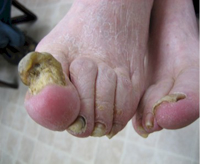Understanding the anatomy of the foot and ankle
Many of our customers who follow this blog and subscribe to our newsletter are in the medical profession. We hear from home  health nurses, wound care professionals, students, and physicians. One of our best resources for these health care profession...
health nurses, wound care professionals, students, and physicians. One of our best resources for these health care profession...










